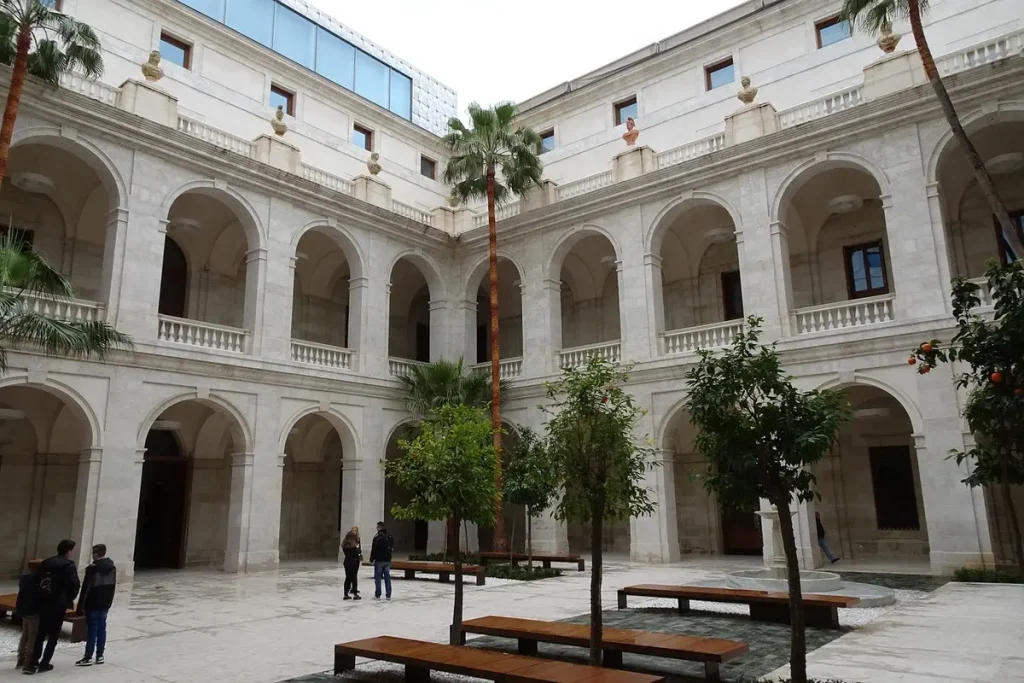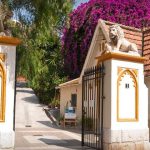The Málaga Museum
History of the Malaga Museum
The Malaga Museum was created in 1973 by merging two museums. These were the former Provincial Museum of Fine Arts and the Provincial Archaeological Museum. Both museums were founded in the early 20th century. The Malaga museum has a rich collection of more than 15,000 archaeological and artistic objects,. The items on display range from prehistoric times to contemporary art. It also showcases the works of local artists such as Picasso, Sorolla, and Moreno Carbonero.
Historically the museum was originally housed in different locations, such as the Palacio de Buenavista (now the Picasso Museum. Other locations included the Alcazaba fortress, and the Convento de la Trinidad. In 1996, the museum had to close its doors due to the lack of a suitable venue. After 20 years of waiting, the museum finally reopened in 2016 in its current location: the Palacio de la Aduana.
The Palacio de la Aduana is a neoclassical building that was constructed between 1791 and 1829 as a customs house. It later served as a tobacco factory and a government office. The building has four floors and a total floor space of 15,400 square meters. It also has a beautiful patio with giant palm trees. The building underwent a major renovation to adapt to the needs of the museum and to preserve its historical value.
The Malaga Museum: A Journey Through History and Art
The Malaga Museum is one of the most impressive cultural attractions in the city. The museum houses two collections: one of archaeology and one of fine arts. Together, they offer a fascinating overview of the rich and diverse heritage of Malaga and Andalusia.
The Archaeology Collection
The archaeology collection occupies the first floor of the museum and displays more than 2,000 artefacts. The items displayed are from different periods and cultures that inhabited the region. You can admire objects from the prehistoric, Phoenician, Roman, Islamic and Christian eras, as well as learn about the social, economic and religious aspects of each civilization. Some of the highlights include:
- A stunning mosaic of Medusa from a Roman villa in Casabermeja.
- A collection of ceramics, jewellery and coins from the Phoenician settlement of Toscanos.
- A bronze sculpture of a boy from the 1st century BC, known as the Idol of Malaga.
- A marble sarcophagus from the 3rd century AD, depicting scenes from the life of Achilles.
- A carved ivory pyxis from the 10th century AD, a rare example of Islamic art in Spain.
The Fine Arts Collection
The fine arts collection occupies the second floor of the museum. This large and unique collection showcases more than 400 paintings and sculptures from the 15th to the 20th centuries. The collection focuses on Spanish art, especially from Andalusia and Malaga. It also reflects the artistic trends and movements that influenced the region. Some of the highlights include:
- A series of religious paintings by Pedro de Mena, Alonso Cano and Juan de Valdés Leal, representing the Baroque style.
- A portrait of Felix Saenz, a famous merchant from Malaga, by Francisco de Goya, one of the most renowned Spanish painters.
- A selection of works by Pablo Picasso, the most famous son of Malaga, showing his early influences and styles.
- A collection of paintings by Joaquin Sorolla, Julio Romero de Torres and Ignacio Zuloaga, depicting scenes of Andalusian life and culture.
- A display of modern art by artists such as Daniel Vazquez Diaz, Jose Moreno Villa and Jorge Oteiza, reflecting the avant-garde movements of the 20th century.
The Malaga Museum is a must-see for anyone interested in history and art. It offers a unique opportunity to discover the rich and diverse legacy of Malaga and Andalusia through its archaeological and artistic treasures. Don’t miss it!

Current Exhibitions at the Malaga Museum
The Malaga Museum has two main sections: Fine Arts and Archaeology. The Fine Arts section is located on the first floor and displays about 200 paintings and sculptures from the 16th to the 20th century. The Archaeology section is located on the second floor and exhibits about 2,000 objects from different cultures and periods, such as Phoenician, Roman, Islamic, and Christian.
Some of the highlights of the Fine Arts section are:
- The Birth of Venus, a large mosaic from the Roman era that depicts the goddess emerging from the sea.
- The Judgment of Paris, a painting by Enrique Simonet that shows the mythical scene where Paris chooses Aphrodite as the most beautiful goddess.
- The Old Man with the Blanket, one of Picasso’s first works that portrays an elderly beggar wrapped in a blanket.
- Sunbathing Couple, a stone sculpture by Elena Laverón that represents a tribute to tourists.
Some of the highlights of the Archaeology section are:
- Hercules’ Mask, a bronze mask from the 1st century AD that depicts the hero with his characteristic lion skin.
- Venus of Benaoján, a ceramic figurine from the Neolithic period that shows a female fertility symbol.
- Gold Scarab, a valuable piece from the Phoenician era that was found in a burial site in Malaga.
- Green Glass Funeral Piece, a Nasrid work from the 14th century that was used to decorate tombs.
Further exhibitions at the Malaga Museum
The museum also hosts temporary exhibitions throughout the year. Currently, you can enjoy:
- Bernardí Roig: The Last Face and The Aphonia of The Minotaur, an exhibition that presents drawings, sculptures, light installations, text, photography and video by this contemporary artist. The exhibition is divided into two parts: one at the Centre Pompidou Malaga and another at the Collection of the Russian Museum of St. Petersburg Malaga.
- Picasso: Draftsman of Words, an exhibition that explores Picasso’s relationship with literature and poetry through his drawings and writings. The exhibition is part of the international programme of events to commemorate the 50th anniversary of Picasso’s death in 2023.
- The Odyssey of Soyuz 2, an exhibition that traces a mysterious episode in the history of space exploration: the disappearance of cosmonaut Ivan Istochnikov in 1968 during a failed mission.

Visiting Information for the Malaga Museum
The Malaga Museum is located at Plaza de la Aduana, 1, in front of the alcazaba and next to Málaga Roman Theatre. You can easily reach it by public transport or by walking from other points of interest in the city center.
The museum is open from Tuesday to Saturday from 9:00 am to 9:00 pm and on Sundays and public holidays from 9:00 am to 3:00 pm. It is closed on Mondays (except public holidays), January 1st, May 1st, and December 25th.
The admission fee is €1.50 for EU citizens and €3 for non-EU citizens. Admission is free for children under 18 years old, students under 26 years old with valid ID, people over 65 years old, people with disabilities, and unemployed people. Admission is also free for everyone on Sundays from 2:00 pm and on February 28th, May 18th, September 27th, and October 12th.
The museum offers guided tours, audio guides, educational activities, and workshops for different audiences and ages. You can check the availability and prices of these services on the museum’s website⁸ or by calling +34 951 91 19 04.
The museum also has a cafeteria, a gift shop, a library, a cloakroom, and free Wi-Fi. The museum is accessible for people with reduced mobility and has wheelchairs available for visitors.
I hope you enjoyed this blog post about the Malaga Museum and that you are eager to visit it soon. It is a great place to discover the history and culture of Malaga and to admire some amazing artworks. If you have any questions or comments, please feel free to leave them below. Thank you for reading!







